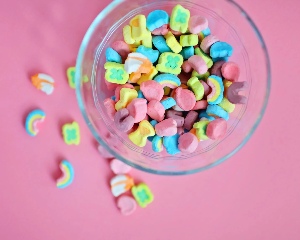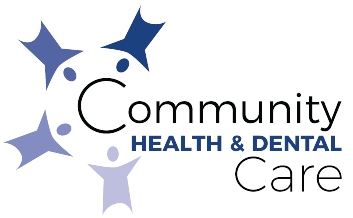Pottstown’s Community Health & Dental Care Asks, Can Breakfast Cereal Be Part of a Healthy Diet?

Cold cereals are an easy, convenient food. Many try to promote the latest nutrition trend or tempt your kids with fun shapes and cartoon characters.
But you may wonder: Are breakfast cereals as healthy as they claim to be and are they the best choice for breakfast?
What is Breakfast Cereal?
Breakfast cereal is made from processed grains and often fortified with vitamins and minerals. It is commonly eaten with milk, yogurt, fruit, or nuts. The key word is “processed.” Unlike simply cooked grains like oatmeal, ready-to-eat cereals are grains that are ground to flour and then mixed with sugar, flavorings, and preservatives. They are then heated, shaped, coated, and packaged. So how did breakfast cereal become so processed?
Maybe a little history will shed some light.
The history of breakfast cereal dates to 1863 when a religiously conservative vegetarian, James Caleb Jackson, soaked dried graham flour in milk overnight to make granula. By the early 1900s, Dr. John Harvey Kellogg (yes, the same name as the cereal brand) made a similar version called granola. Soon after, Kellogg’s former patient, C.W. Post, created Grape-Nuts which became the first popular cold breakfast cereal. A few years later, the Quaker Oats Company added puffed rice and puffed wheat as an alternative to its popular oatmeal.

By the 1920s, the method of processing of different cereal grains became more sophisticated, and food companies were able to use new technologies to create different shapes and cereal products like Chex, Cheerios, and Rice Krispies. After World War II, growing families increased the demand for ready-to-eat breakfasts and food companies added more sugar to drive sales.
The cereal market exploded by the 1970s and there were countless choices of sugar-laden treats with a nutrition content closer to a cookie than the healthy breakfast that was imagined a century earlier.
The 1990s ushered in mainstream healthy cereal with lower sugar organic alternatives like molasses-sweetened Puffins and Nature’s Path Gorilla Munch. Today, there are grocery aisles filled with cereal choices all claiming to be healthy options for the “most important meal of the day.”
The long-held belief that “Breakfast is the most important meal of the day” was an advertising slogan created by Dr. Kellogg and his colleagues to sell their newly invented breakfast cereal.
How to find a healthy breakfast cereal? Check the sugar!
Simply put, added dietary sugar may arguably be the unhealthiest ingredient in the modern diet. Excess sugar consumption has been linked to obesity in adults and children, and the diagnosis of chronic diseases like type 2 diabetes.
Sugar occurs naturally in most foods, but through food processing, more sugar is added to create a more desirable and addictive product. The simple sugars in highly processed foods lead to a rapid increase in blood sugar followed by a “crash” a few hours later. This up-and-down blood sugar cycle drives cravings for more sugar and can have long-term health effects, such as increasing the risk of type 2 diabetes, cardiovascular disease, and cancer.
Most breakfast cereals are loaded with added sugar and refined grains. Before you choose, check the nutrition facts labels on a box of cereal to note the sugar content. You will likely see that sugar is the second or third ingredient. Ideally, you should choose a cereal with no more than 5 grams of sugar per serving.
Buyer Beware
If it seems too good to be true, it is probably not true. Food manufacturers use extremely sophisticated methods in an effort to trigger an emotional response that will make you buy their product. Breakfast cereal manufacturers have a long history of making misleading health claims that oversimplify the health benefits of their product while hiding high levels of sugar and preservatives.
Food manufacturers also specifically target children. Cereal companies use bright colors, cartoon characters, and action figures to attract children’s attention. Not surprisingly, this causes children to associate breakfast cereals with entertainment and fun. Studies have also shown that some children prefer the taste of foods that have popular cartoon characters on the packaging.
While the colors and cartoons make the products more appealing to children, the health claims make the parents feel better about buying such products for their kids. Unfortunately, this aggressive food marketing has resulted in rising levels of childhood obesity and other diet-related diseases.
Making Healthier Cereal Choices
If you choose to eat cereal for breakfast, here are some tips to help you select a healthier option.
- Limit sugar. Try to choose a breakfast cereal with under 5 grams of sugar per serving. Read the food label to find out how much sugar the product contains.
- Aim for high fiber. Breakfast cereals that pack at least 3 grams of fiber per serving are optimal. Eating enough fiber can have numerous health benefits, such as helping to regulate blood sugar.
- Pay attention to portions. Breakfast cereals tend to be crunchy and tasty, and it can be very easy to consume a high number of calories. Try to measure how much you’re eating, using the serving size information on the packaging for guidance. Servings are usually 1 cup or less.
- Read the ingredients list. Ignore the health claims on the front of the box, and instead, check the ingredients list. The first two or three ingredients are most important because they make up the majority of the cereal. For example, if sugar is the second ingredient, then it is the second most plentiful ingredient in the box.
- Check for hidden sugar. Food manufacturers may use tricks to hide the amount of sugar in their products. If sugar is listed several times under different names (words like dextrin, dextrose, sucrose, fructose, syrup) — even if it is not in the first few spots — the product is often very high in sugar.
- Add some protein. Protein increases fullness and reduces appetite. Try adding some Greek yogurt or a handful of nuts or seeds for extra protein with a serving of cereal.
Breakfast cereal can be a healthy option is it’s low in sugar and high in fiber. Be sure to check labels, portion sizes, and add protein to your meal. You may also want to limit the number of days you and your family have cereal and opt for other options when you have more time.
Some great choices include old-fashioned oatmeal with fruit and nuts, Greek yogurt with fruit and nuts, or scrambled eggs with vegetables.
Lower-Sugar Breakfast Cereals
Total: 4.9 grams sugar per ¾ cup serving
Wheaties: 4 grams sugar per ¾ cup serving
Rice Krispies: 4 grams sugar per 1 ½ cup serving
Kellogg’s Corn Flakes: 2.25 grams sugar per 1 cup serving
Kix: 2.3 grams sugar per 1 cup serving
Rice Chex: 2 grams sugar per 1 cup serving
Cheerios: 2 grams sugar per 1 ½ cup serving
Find more health tips at Community Health and Dental Care.
Stay Connected, Stay Informed
Subscribe for great stories in your community!
"*" indicates required fields






![95000-1023_ACJ_BannerAd[1]](https://montco.today/wp-content/uploads/sites/2/2023/03/95000-1023_ACJ_BannerAd1.jpg)
























![ForAll_Digital-Ad_Dan_1940x300[59]](https://montco.today/wp-content/uploads/sites/2/2022/06/ForAll_Digital-Ad_Dan_1940x30059.jpg)











